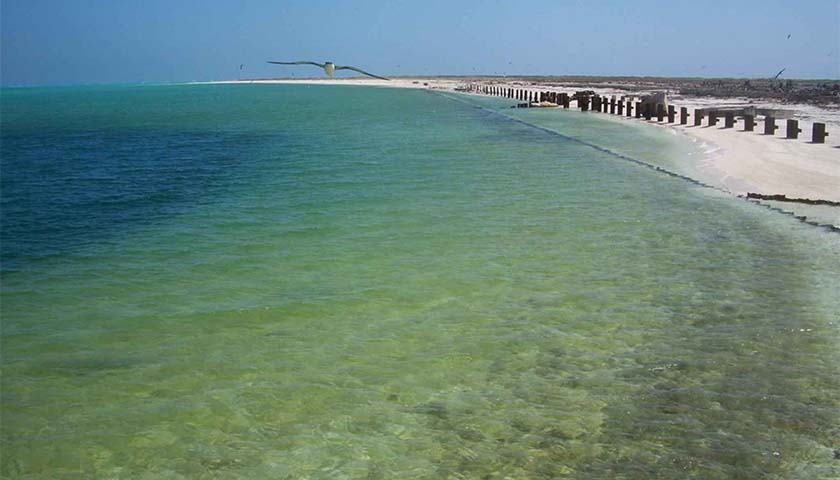A report from the Florida Fish and Wildlife Commission’s Harmful Algal Bloom (HAB) Task Force found that Florida’s algal blooms and red tide could get worse in the coming years. The report recommends more research into determining the causes of such water quality issues.
The task force was appointed by Florida Gov. Ron DeSantis (R) and found more Floridians could suffer from respiratory illnesses and sea life could die. Algal blooms are increasing amounts of nutrient rich water build-ups found in algae and lead to harmful effects to humans’ breathing and the life of sea animals. Florida’s coastlines and freshwater ecosystems have been enduring intermittent flare ups for years.
“The HAB Task Force understands that nutrients are not the sole influence affecting red tides or other HABs, but reducing inputs of nutrients to our freshwater and coastal systems is an important step in reducing HABs,” the report said. “The HAB Task Force also recognizes that addressing Florida’s nutrient enrichment problem will require improvements to existing regulatory programs and implementation of new and innovative ways to manage nutrients.”
The report also indicated the projected lost revenue from the state due to canceled tourism trips and limited access to public beaches or lakes. Approximately $317 million in state sales revenue and $120 million in local revenue was lost for Southwest Florida, alone.
Additionally, the state had to redirect around $10 million to assist local communities in cleanup efforts when the blooms subsided.
The task force theorized that alleged climate change may be leading to an increased frequency in the blooms.
“Scientific research suggests that the impacts of climate change may promote HABs through a complex variety of mechanisms including warmer water temperatures, changes in salinity, changes in rainfall patterns, increased atmospheric carbon dioxide concentrations, coastal and ocean acidification, changes in coastal upwelling, and sea level rise,” the report said.
Environmental advocates, in an interview with Inside Climate News, said the task force is putting an emphasis on the wrong solution.
“The task force recommends throwing taxpayer money at unproven mitigation technologies,” said Jaclyn Lopez, Florida director at the Center for Biological Diversity. “If the state regulators instead just stopped pollution at the source by holding polluters accountable, Florida would have a much better chance at turning the corner on its water quality crisis.”
Florida Gov. Ron DeSantis (R), last September, announced a renewed focus on Florida’s water quality by recommending $100 million for projects across Florida. Approximately $53 million will be going to the Indian River Lagoon to upgrade septic tanks and wastewater treatment facilities.
Water quality experts have long thought the downstream flow of nutrient-rich wastewater was a cause for numerous algal blooms around Lake Okeechobee and the Everglades.
Other water quality priorities include water infrastructure repairs, like to the Piney Point reservoir, which leaked phosphate into Tampa Bay likely leading to red tide last summer.
DeSantis, however, has said that he wants to continue improving Florida’s water quality while also deriding “a bunch of left-wing things” that often guides environmental policy.
“What I found is, people, when they start talking about things like global warming, they typically use that as a pretext to do a bunch of left-wing things that they would want to do anyways,” DeSantis said when asked about alleged rising sea levels and the root cause of “global warming.” “We’re not doing any left-wing stuff. What we’re doing, though, is just reacting to the fact that, OK, we’re a flood-prone state, we do have storms.”
– – –
Grant Holcomb is a reporter at The Florida Capital Star and The Star News Network. Follow Grant on Twitter and direct message tips.
Photo “Algal Bloom” by USFWS.








